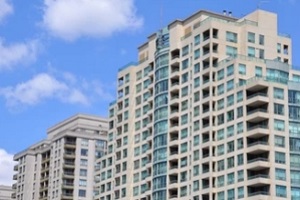 Owning a condominium is a unique and challenging responsibility. Compared to other real estate endeavors, condo ownership comes with its own specific requirements that every condo owner should consider. Getting the proper protection is crucial because it can save you big when it comes to liability concerns as well as common incidents such as property damage.
Owning a condominium is a unique and challenging responsibility. Compared to other real estate endeavors, condo ownership comes with its own specific requirements that every condo owner should consider. Getting the proper protection is crucial because it can save you big when it comes to liability concerns as well as common incidents such as property damage.
In order to help condo owners better understand the many nuances of condo ownership and the required insurance policies, we have created a list of the most FAQs regarding condo association’s insurance.
How Does Condo Association Insurance Work?
Just like condo units bridge the gap between apartments and houses, condo associations bridge the gap between landlords and homeowners’ associations. While they are responsible for the grounds and common areas, condo associations also allow condo unit owners the freedom of ownership of the interior of their units. This balance of ownership, responsibility, and liability is best reflected in the Condominium Master Insurance Policy (sometimes known as an HOA Master Policy).
These master policies are instrumental in defining the responsibilities of the association against the responsibilities of the condo owners. While condo owners are often left to be responsible for their own units and insuring it accordingly, other associations take more of a hybrid approach. The key is to make sure that everyone is on the same page and understands where this line is drawn.
What Does The Master Association Insurance Policy Cover?
A vital part of the relationship between condo owners and the association is for both sides to understand where their responsibilities lie. For the association, it’s important to make sure that they have full coverage to address all relevant concerns, and for unit owners to know where their own insurance will need to come into play.
 A master insurance policy covers places that are regularly used by multiple condo owners, known as shared or common areas. This includes both limited common areas and general common areas. These shared areas include parks and pools as well as buildings such as gyms, event spaces, parking lots, green areas, and walkways.
A master insurance policy covers places that are regularly used by multiple condo owners, known as shared or common areas. This includes both limited common areas and general common areas. These shared areas include parks and pools as well as buildings such as gyms, event spaces, parking lots, green areas, and walkways.
The major factor to pay attention to is where the condo’s insurance coverage ends and the unit owner’s insurance coverage begins. As with most insurance coverage types, there are a variety of different policies that are available. Two of the main types that most associations acquire include:
Bare Walls-In:
A ‘Bare Walls-In” policy focuses on the actual structure of the condo. This includes the exterior, roofing, framing, wiring, piping, insulation, and the drywall itself. What it does not cover is the interior of the home such as the fixtures, installations, and appliances. Coverage of these is most often left to the owner of the condo.
All-In:
An “All-In” policy instead includes the fixtures and installations and may include coverage to built-in appliances that come with the unit.
What Are the Most Common Policies That Condo Association Insurance Includes?
The most common policies for condo associations include:
General Liability Protection
General liability protects the association in the event of general accidents such as injury on the grounds, weather damage, or a lawsuit from tenants.
Property Coverage
Property coverage ensures that the association is covered when it comes to the shared spaces and outside of the condo unit. These areas include the roof, elevator, gyms, and other shred spaces on the premises.
Directors And Officers (D&O)
Members of the condo board can be sued or held liable for missteps in decision-making, even though they are often volunteers. Unfortunately, this doesn’t exempt them from liability. As a crucial part of the decision-making committee, each board member will face personal liability in the lawsuit – unless you have a comprehensive D&O policy.
What Are The Biggest Mistakes Condo Boards Make When Buying Insurance?
 A lot of boards will move their insurance policy from one insurance company to another without double-checking that they still are covered by everything they originally were covered under. Policies can look the same on the surface with features like general liability, property, and crime coverage.
A lot of boards will move their insurance policy from one insurance company to another without double-checking that they still are covered by everything they originally were covered under. Policies can look the same on the surface with features like general liability, property, and crime coverage.
But sometimes, the definitions, terms, exclusions, and language can be quite different – which can leave condo associations vulnerable. The language in these policies determines if you’re fully indemnified in the event you need coverage.
The most important thing is that all parties understand where liability lies. The more clear these details are for everyone involved, the easier it will be for condo owners to understand the type of policy that they need to acquire in order to be properly protected.
Learn More About Condo Association Insurance With JMG
JMG Insurance Corp is a full-service insurance agency. Their business is built on the principles of providing superior customer service and quality insurance solutions for their clients.




